
White papers
Stay up to date on the latest topics and gain industry insights from HMS' experts through our white papers, providing valuable knowledge and analysis.
The Ixxat CAN@net NT CAN gateway solution from HMS Networks enables global remote start-up, maintenance, and diagnostics of marine engines via CAN to Ethernet conversion, ensuring reliable, high-performance communication.
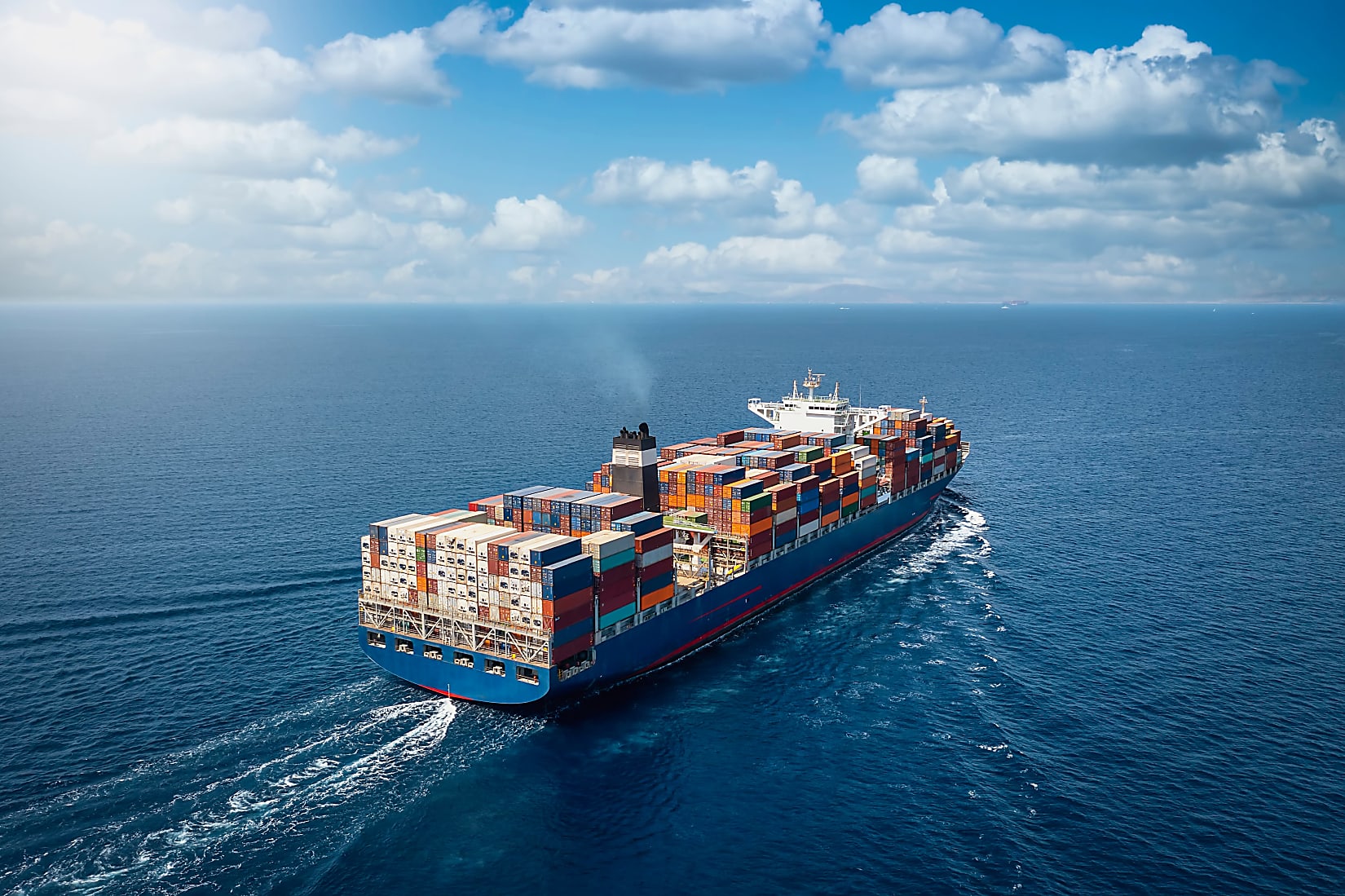
Remote engine start-up and maintenance:
A leading global manufacturer of commercial marine engines will be counting on the proven Ixxat CAN gateway solution "CAN@net NT" from HMS Networks in the future.
For start-up, maintenance, and diagnostics of engines with several thousand horsepower, numerous parameters have to be read out, interpreted, and configured via the CAN fieldbus for safe acceptance. Until now, the connection between the engine (CAN) and the test software (USB) had to be made locally using USB-to-CAN protocol converters. By contrast, the future solution will have reliable signal conversion from CAN to Ethernet. This will enable customers to perform maintenance and diagnostics tasks in their software applications from anywhere in the world thanks to Ixxat CAN@net NT.
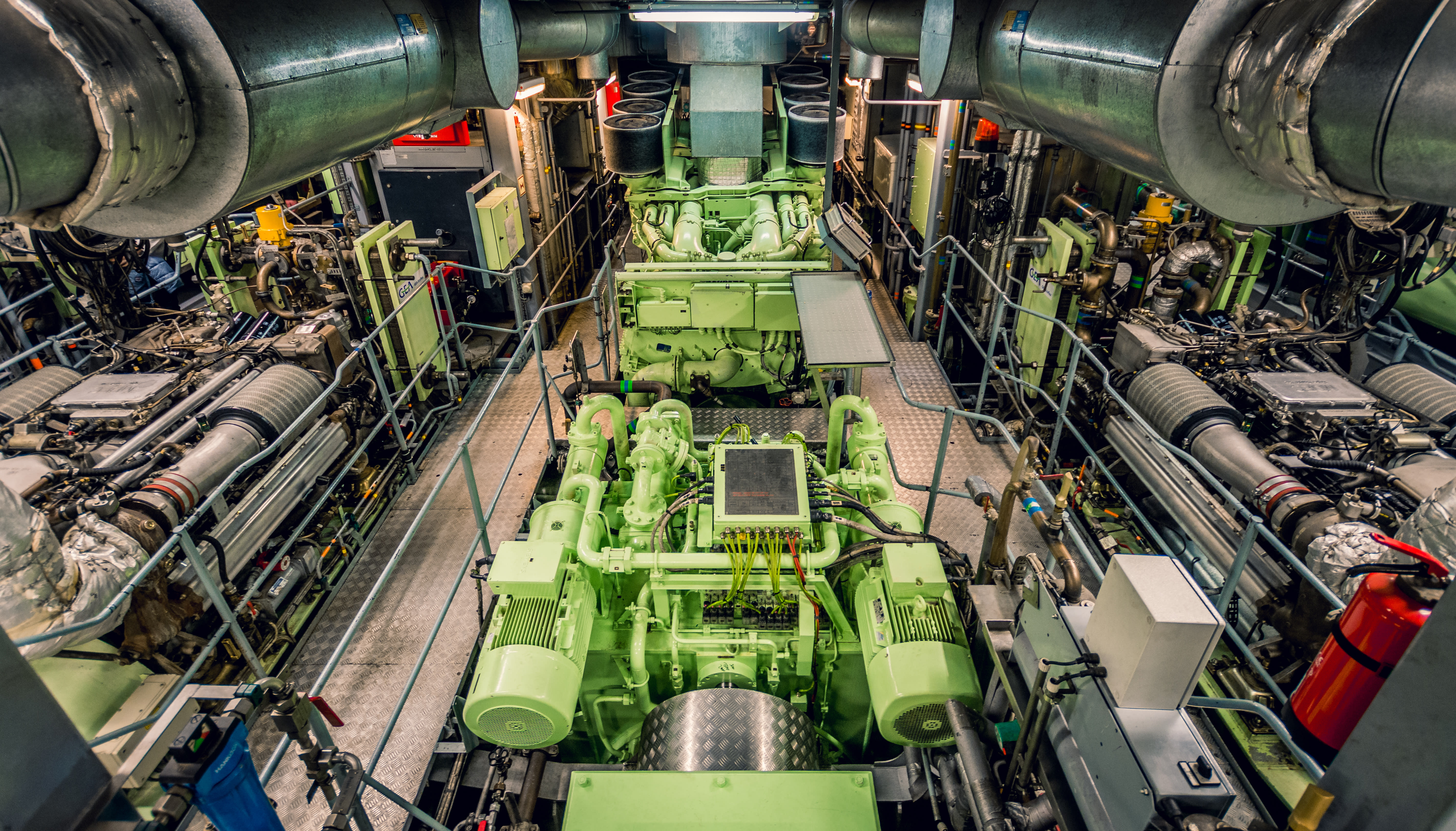
Marine engine start-up, diagnostics and maintenance are technically demanding processes that call for high-performance communication tools. In the past, the production facility had to run the software for the associated engine test procedures on site, but global communication now makes efficient remote testing possible. In this case, the engines are manufactured and go through the approval process in South America, but the test center is on a different continent. This means a remote connection between two continents is needed for communication between the engine and the test software. The connection needs to provide reliable signal quality while enabling signal conversion between the engine’s CAN-based communication and the PC-based software application. The inadequate transfer rates for VPN access in some countries are an additional challenge; delays and performance deficits are to be expected.
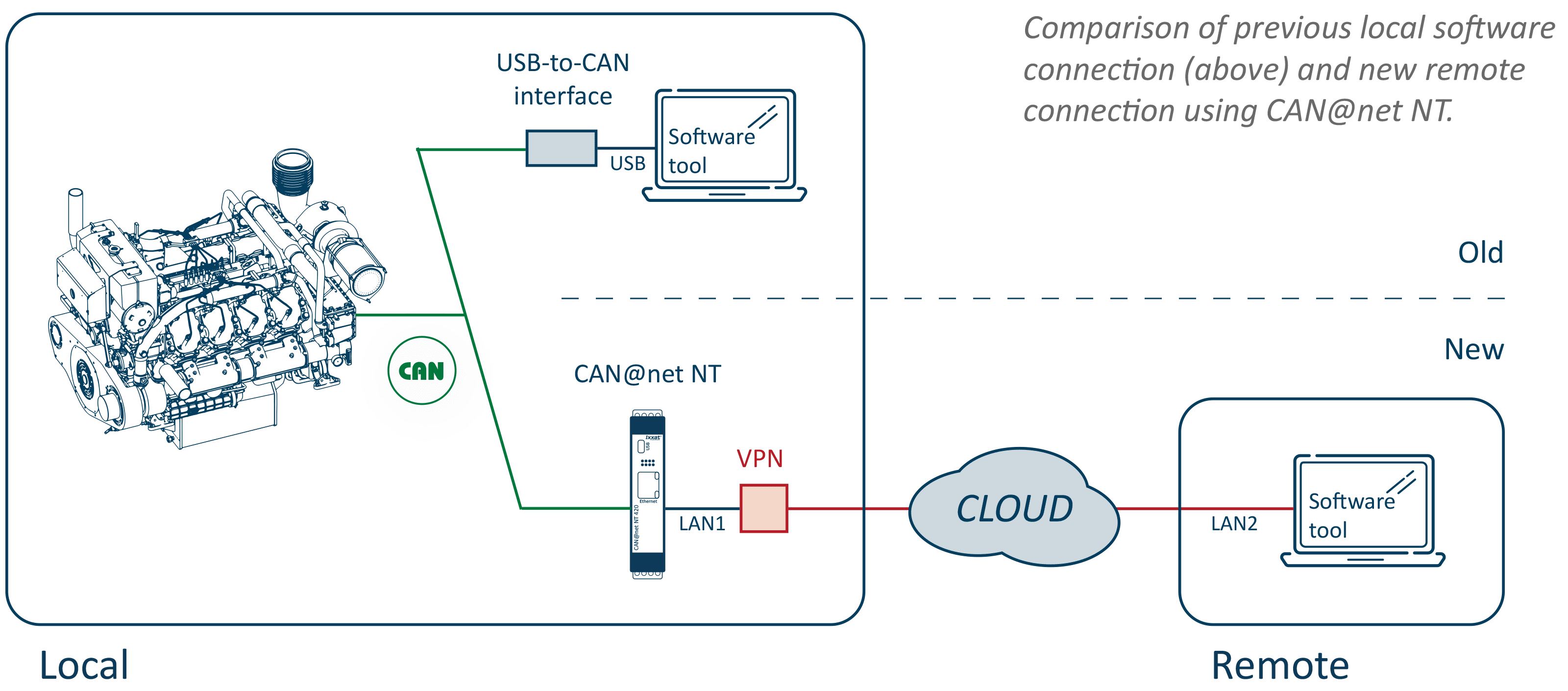
A CAN line from the engine is connected directly to the CAN@net NT 100 gateway via a 9-pin D-sub connector. The CAN signal is converted to Ethernet in the CAN gateway and then sent via LAN (RJ45 interface) to a VPN connection. Depending on the mode being used, the CAN@net NT provides high-performance filtering and mapping functionalities for the conversion. To enable stable communication despite low VPN and internet transfer rates, checking the CAN status readout cycle time and increasing it to at least one second is recommended. This ensures high signal transmission quality even over very long distances. The PC system then receives the data signal from the internet and transfers it via LAN to the diagnostics software, which reads in, interprets, and processes the required test parameters.
Not only can the CAN@net NT series bridge great distances, it also provides a high level of protection for connected components thanks to galvanic isolation (1 kV for 1 second), which also increases system reliability. The devices support all standard bit rates (5 to 1000 kbps) and save time and money thanks to their simple and quick installation and start-up.
Country: Germany
Solution: Network gateways
Industries: Engine production
Products: Ixxat CAN@net NT
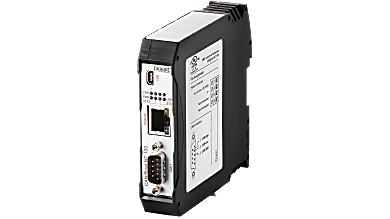

Stay up to date on the latest topics and gain industry insights from HMS' experts through our white papers, providing valuable knowledge and analysis.

Our products solve everyday industrial communication problems. Discover how our customers have improved their business with HMS case studies.
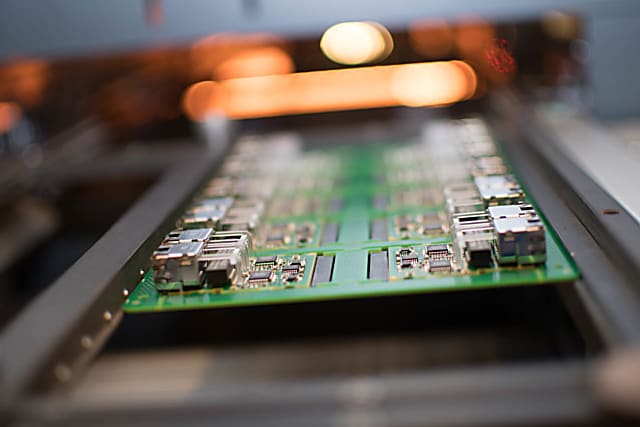
HMS communication solutions help thousands of companies solve specific communication problems in many different industries and applications.